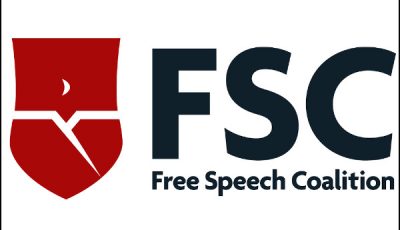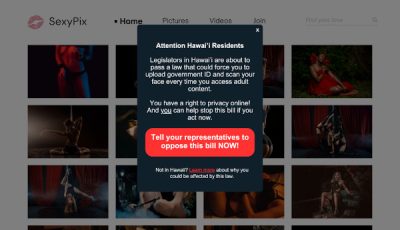FSC Offers “Clarification” on Utah’s Porn-Labeling Law
 In a statement issued Thursday, the Free Speech Coalition addressed Utah’s law requiring anyone distributing “obscene” material in the state to place a warning label on such content warning viewers of the dangers of showing that content to minors.
In a statement issued Thursday, the Free Speech Coalition addressed Utah’s law requiring anyone distributing “obscene” material in the state to place a warning label on such content warning viewers of the dangers of showing that content to minors.
“The law has caused a fair amount of confusion, both within the state and among adult producers,” the FSC said in its statement, which is available in full on the FSC website. “While we cannot provide legal advice or specific guidance about any business’ potential liability under the law, we hope we can provide some context for understanding the new law.”
The FSC said that some of the confusion surrounding the law flows from previous iterations of the bill, which changed in a crucial way prior to being passed.
“When the original bill was introduced in early February, the proposed law applied not just to ‘obscene’ content, but to any representation of sexual activity,” FSC noted. “Thanks to the work of ACLU and objections raised by FSC, the law has now been significantly narrowed. Currently, the requirement to label content only applies to legally ‘obscene’ material.”
The good news, such as it is, is that by limiting the scope of the law to cover only obscene material, it would seem the statute now covers far less adult content than its crafters originally intended – but as the FSC and others have observed, the definition of obscene, even under the law, is hardly a clear cut matter.
“Unfortunately, there is no clear definition for obscenity under US law – in order for a work to be declared ‘obscene’, a prosecutor must bring an obscenity case and secure an obscenity conviction,” the FSC said in its statement. “It is a very high standard to prove obscenity. There have been relatively few obscenity prosecutions in the last two decades, and even then for fairly extreme material.”
While it may be comforting to think that, in light of the above, Utah would only seek to enforce the new law rarely and with respect to ‘extreme’ porn, that notion is far from being a certainty, as the FSC explained.
“Given this, it’s unclear how the law can or will be applied to individual distributors or website owners,” the FSC added. “In theory, until a work is deemed obscene by a court, it would not be subject to the labeling requirements of this law. However, could the Attorney General bring a case regardless – and assume most adult companies would rather pay a $2500 fine than fight a lengthy and costly First Amendment case, even if they would likely prevail? We don’t yet know.”
In comments offered to YNOT back in late February, when the Utah law was still just a bill, attorney Larry Walters made very similar points. Walters also noted that even if the law applies to a narrow slice of pornography, passing it in the first place has the advantage of allowing Utah’s legislature to look like it’s doing something significant to curtail the distribution of porn in the state.
“This statute involves a shell game which makes it appear that the legislature is requiring the labeling of all ‘pornography,’” Walters said. “However, the definition of pornography in Utah tracks the definition of obscenity. So only distributors of obscene material are affected by the statute’s labeling obligations. This leaves the public impression that lawmakers are requiring widespread labeling of porn, while in reality the law would only impact a very small subset of adult media that can be deemed legally obscene, under the Miller Test.”
“Given the First Amendment protections afforded to sexually-explicit media, it is difficult for lawmakers in the U.S. to find ways to regulate adult content,” Walter added at the time. “But bills like this allow politicians to declare victory without accomplishing anything significant.”
Until Utah moves to enforce its new law, we can only speculate as to how broadly the state will interpret the word “obscene” in this context. In the meantime, the FSC recommends reading the law carefully and discussing it with an attorney “well-versed in First Amendment law.”













